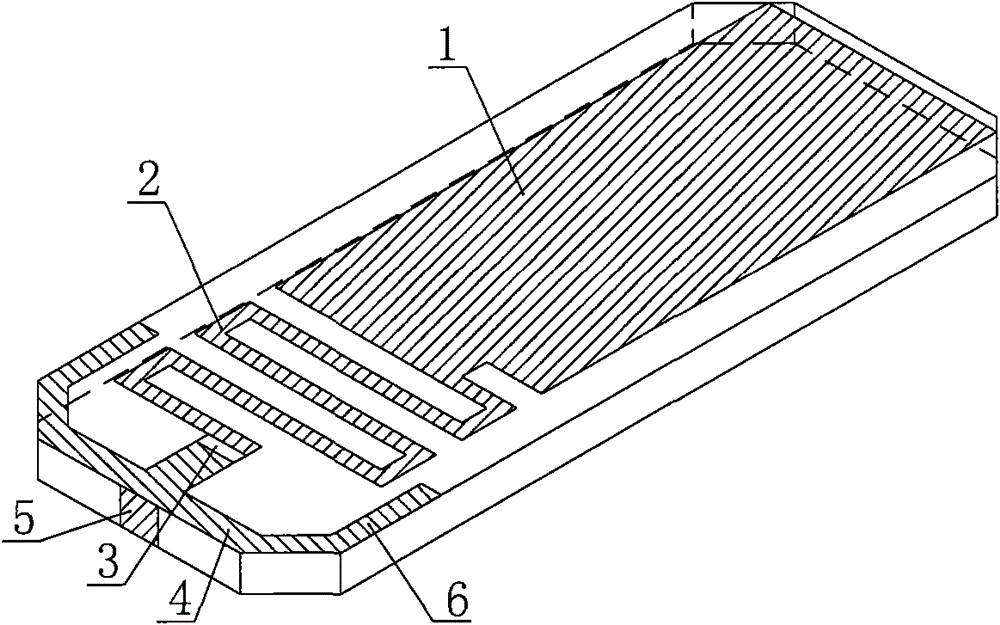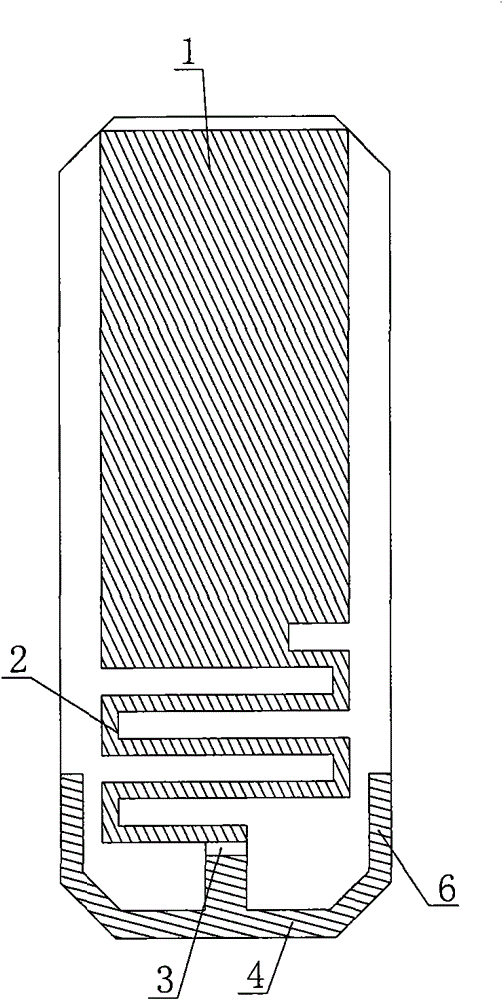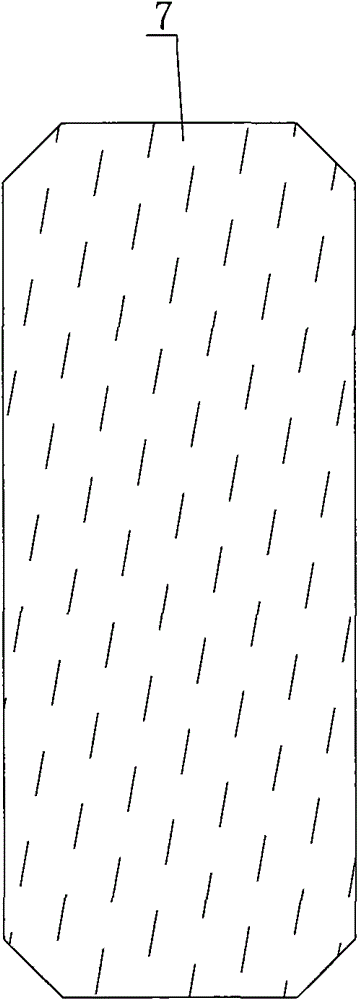Radio frequency identification antenna
A radio frequency identification and antenna technology, applied in the directions of antenna supports/installation devices, record carriers used by machines, instruments, etc., can solve problems such as poor use effect, pattern and chip matching, and inability to resist metal, and achieve long-distance identification. Effect
- Summary
- Abstract
- Description
- Claims
- Application Information
AI Technical Summary
Problems solved by technology
Method used
Image
Examples
Embodiment 1
[0022] Such as figure 1 , figure 2 , image 3 A radio frequency identification antenna shown, the radio frequency identification antenna includes a radio frequency tag chip 3, a base body and a metal pattern coated on the base body, the base body adopts a ceramic sheet with a dielectric constant of 5-150, and the metal pattern is composed of a radiation part 1. The feeder matching part 2, the resonant matching part 4, the side connection part 5 and the anti-metal part 7 are composed. The radiation part 1, the feeder matching part 2 and the resonant matching part 4 are on the front of the substrate, and the anti-metal part 7 is on the back of the substrate. Such as figure 2 As shown, the shape of the radiation part 1 is rectangular; the rectangular wave meander line of the feeder matching part 2 is a rectangular wave with 0.115 wavelengths, which can produce inductive matching components of j700~j900. One end of the feeder matching part 2 is connected to the radiation par...
Embodiment 2
[0024] Such as Figure 6 A radio frequency identification antenna shown, the radio frequency identification antenna includes the radio frequency tag chip 3 described in embodiment 1, the substrate and the metal pattern coated on the substrate, the metal pattern consists of the radiation part 1, the feeder matching part 2, the resonance matching part 4. The side connection part 5 and the anti-metal part 7 are composed, the difference is that the shape of the radiation part 1 is octagonal; the rectangular wave meander line of the feeder matching part 2 is a rectangular wave with 0.11 wavelengths, which can produce the inductance of j700~j900 Match components.
Embodiment 3
[0026] Such as Figure 7 A radio frequency identification antenna shown, the radio frequency identification antenna includes the radio frequency tag chip 3 described in embodiment 1, the substrate and the metal pattern coated on the substrate, the metal pattern consists of the radiation part 1, the feeder matching part 2, the resonance matching part 4. The side connection part 5 and the anti-metal part 7 are composed, the difference is that the shape of the radiation part 1 is a polygon; the rectangular wave meander line of the feeder matching part 2 is a rectangular wave with a wavelength of 0.15, which can produce an inductive matching component of j700~j900 . The length of the resonant arm in the resonant matching part 4 becomes almost zero, so that the capacitive matching component is reduced to match the circuit.
PUM
 Login to View More
Login to View More Abstract
Description
Claims
Application Information
 Login to View More
Login to View More - R&D
- Intellectual Property
- Life Sciences
- Materials
- Tech Scout
- Unparalleled Data Quality
- Higher Quality Content
- 60% Fewer Hallucinations
Browse by: Latest US Patents, China's latest patents, Technical Efficacy Thesaurus, Application Domain, Technology Topic, Popular Technical Reports.
© 2025 PatSnap. All rights reserved.Legal|Privacy policy|Modern Slavery Act Transparency Statement|Sitemap|About US| Contact US: help@patsnap.com



